
Welcome to the first entry in my Deep Dive series, where I look at the full studio discographies and histories of some of the major names in progressive rock and progressive metal. I plan to highlight output beyond the “classic” releases. In fact, I plan on the discussion of a group’s classics to be quite brief.
For those who don’t feel like reading this massive entry, I’ve included a summary/TL;DR and ranking of albums at the end. I’m opting to explore albums chronologically, as opposed to a ranked-list format. The context in which albums were made is important, and this is an element often missed in a ranked-list.
For this inaugural entry, I’ve opted to look at one of the absolute biggest names in the genre: Yes. For many, this band is the band when it comes to progressive rock, and it’s clear why. They’re known for their album-side-covering suites, virtuosic musicianship, sci-fi-scenery-adorned album covers, and abundant pretension. Yes are practically metonymy for “progressive rock.” The band has a massive discography, stretching across 21 albums and six decades. This body of work features a great breadth of stylistic variation, as well as a wide range in quality.
Part I: Origins (1968-1970)
Yes were formed in London in 1968 by bassist Chris Squire, vocalist Jon Anderson, drummer Bill Bruford, and guitarist Peter Banks, with keyboardist Tony Kaye joining the band shortly thereafter. Like most bands of this era, they started off playing primarily covers of bands like The Beatles and Traffic, but they soon began writing and performing original compositions. (A Beatles cover (“Every Little Thing”) did make it onto their debut album.)

In 1969, Yes recorded their first album, Yes. Yes is not really a progressive rock album, but few of the early prog acts started off in the genre. Jethro Tull were a blues band, Genesis were a folk rock/baroque pop act, and Rush were a Led Zeppelin knock-off. In that regard, Yes’s debut was closer to the sound they’d become known for than that of many other bands. It’s a heavy psychedelic rock album, featuring significant jazz influences in the instrumentation and folky harmonies sung by Anderson and Squire.
Already, many of their signature sounds were in their embryonic stages. Chris Squire’s bass crunched far more aggressively than almost every other contemporary band, and the aforementioned harmonized vocals gave their music a distinctive flavor. “Looking Around” in particular points to the band’s future exploits. The bass is more of a lead instrument than the guitar on this song, and Tony Kaye’s organ soars above it all. It’s still rough around the edges, though. They’d tighten up their sound on future releases and give the songs greater structural complexity. It’s obvious Yes harbored higher artistic ambitions than what was displayed here. A lot of the album is still quite poppy, and it’ll likely appeal to a lot of people who enjoy late 1960s hard rock.
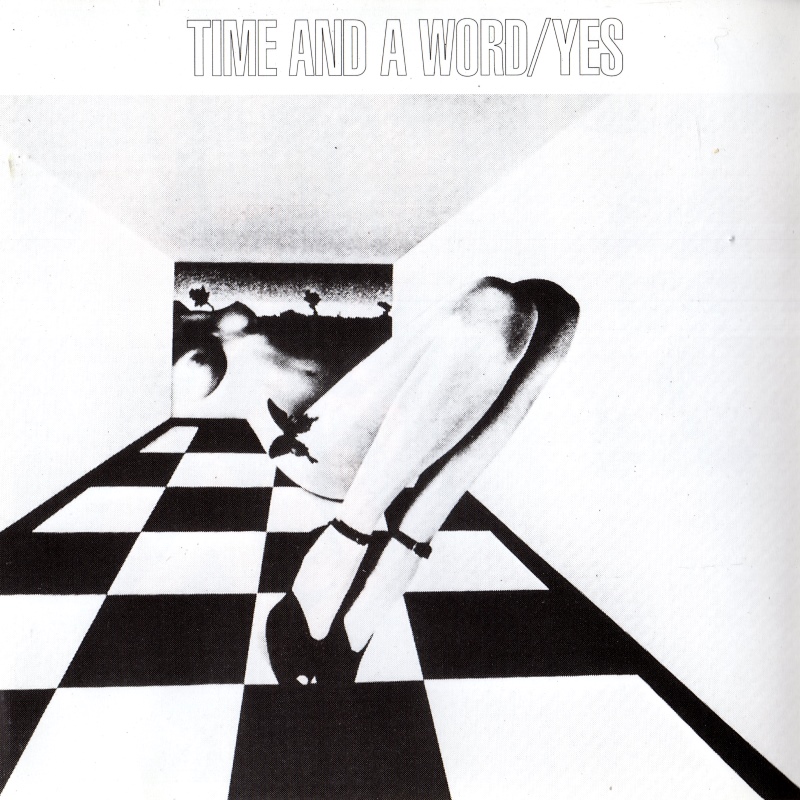
About a year later, Yes released their second album, Time and a Word. Yes stuck with a sound comparable with their debut for most of it, but they continued to tentatively spread their artistic wings. Much like the last album, this album features a pair of covers, but they’re amped-up, rearranged, and turned into that nascent brand of progressive rock. The whole album features the use of a small orchestra. It’s consistent but unobtrusive. I wouldn’t necessarily call it a smooth integration, but it works, and it adds a distinct flavor.
The songwriting on Time and a Word is more mature than on the debut. Cuts like the title track, and “Astral Traveller” sound more in line with the band’s best-known sound. Extended instrumental sections on “Then” and “The Prophet” also foreshadow eventual suites like “Starship Trooper” and “Close to the Edge”.
Guitarist Peter Banks expressed reticence about working with an orchestra, and he left the group shortly before this album was released. In my view, he was the obvious weak link in the band. Chris Squire’s bass often took precedence over Banks’s guitar, and the few solos Banks had, while competent, were not to be missed. Nothing about them particularly stood out, though he did have a skill for jagged, angular strumming which worked well with this early incarnation of the band.
Banks was replaced by Steve Howe, coming from the band Tomorrow. With Howe’s arrival, Yes would enter into their best-known, most-acclaimed era.
Part II: The Classics (1971-1977)
I don’t intend to dwell on this classic era of the band for too long; the purpose of this column is to explore Yes’s lesser-known releases. But this period still needs to be addressed.
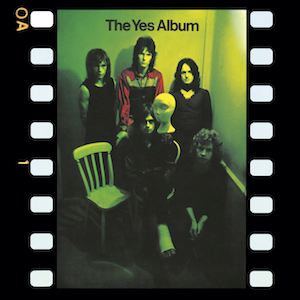
In 1971, Yes put out The Yes Album. (Coincidentally, fellow prog-rockers (at the time) Deep Purple released their similarly-confusingly-titled first and third albums around the same time: Shades of Deep Purple and Deep Purple, respectively.) While the classic lineup wasn’t quite here, this is their first, undeniably classic album. It features such enduring favorites as “Yours Is No Disgrace”, “Starship Trooper”, “I’ve Seen All Good People”, and “Perpetual Change”. Steve Howe was a brilliant addition to the band, adding his own flair and finally giving someone for Chris Squire to play with, rather than over.
Keyboardist Tony Kaye left the band after this album, reportedly due in part to his hesitance about adding Mellotron and Moog synthesizers to his sound, preferring to stick with organ and piano. Kaye was replaced by sequined-cape-wearing keyboard wizard Rick Wakeman, completing Yes’s short-lived period of peak musicianship.

Now consisting of five of the best musicians in the whole of the progressive rock scene, Yes put out Fragile and Close to the Edge less than a year apart. Fragile is often-vaunted, but I’ve long maintained that it’s an uneven, inconsistent album. A damn good uneven album, but an uneven album, nonetheless. Close to the Edge, though, is unassailable. It’s about as close to a perfect album as a band can make, and I count it among my personal top ten (and likely top five).
Following Close to the Edge, Bill Bruford left Yes to join King Crimson, injecting that band with a new sense of vigor and artistic ambition. Replacing Bruford was Alan White. Almost no one is on par with Bruford’s skill as a drummer, White included. He’s a good drummer but doesn’t stand out quite like Bruford.
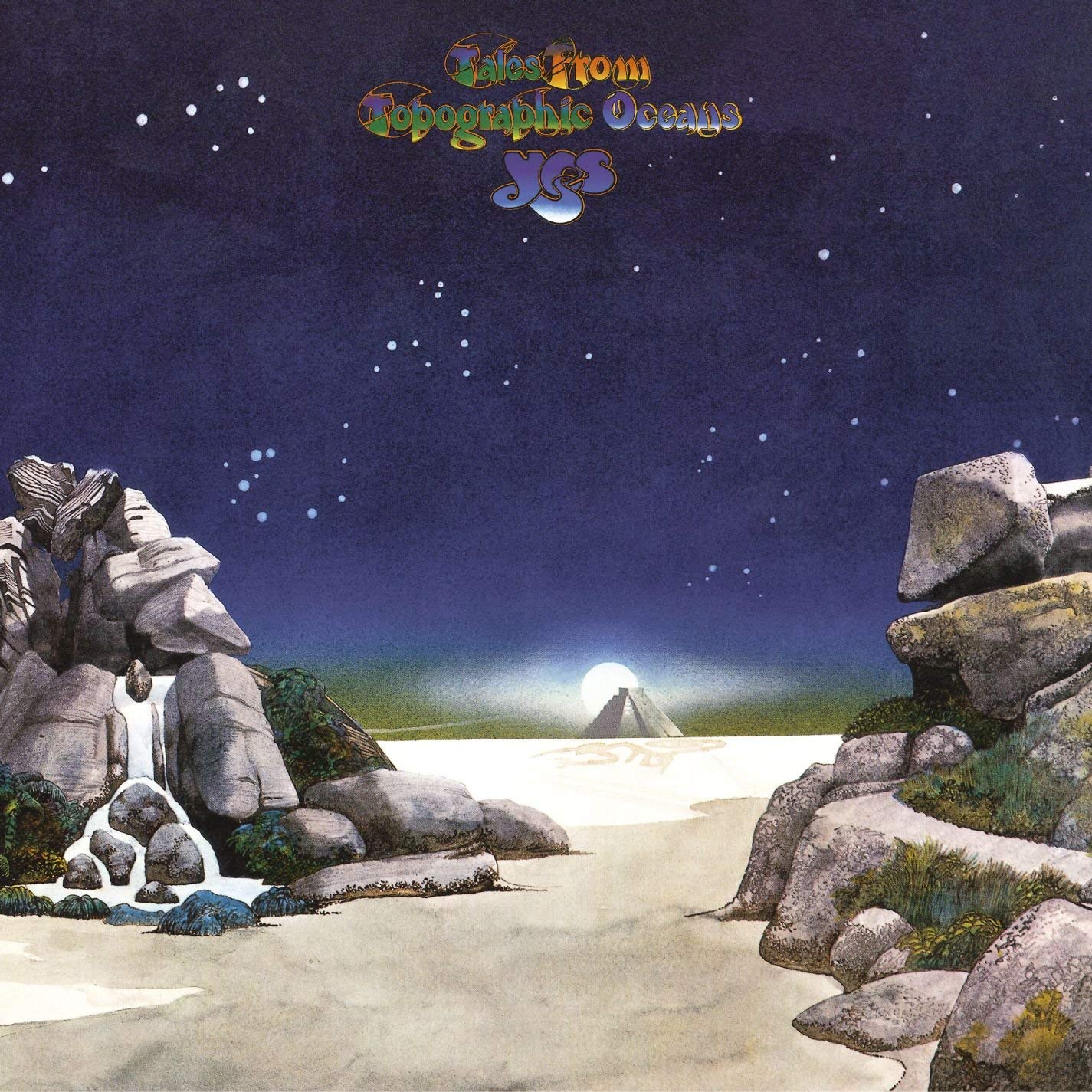
The following Tales from Topographic Oceans, while popular among a certain cohort of Yes fans, is often attacked for being bloated, meandering, and so far up its own ass it could check for polyps. You’ll receive no arguments from me on that last point, but I like this 80-minute, four-song monster of an album a lot.
Rick Wakeman, due to personal friction with the band, left following the tour supporting Tales. (He was the only non-vegetarian in the group, among other sources of disagreement; and he once stopped playing in the middle of a concert to eat a curry on-stage as a sign of his dissatisfaction.)

Following Wakeman’s departure, he was replaced by Swiss musician Patrick Moraz. Where Wakeman drew his influence from classical music, Moraz’s playing was rooted more in jazz, giving 1974’s Relayer a unique tone in Yes’s catalogue. This is another album that’s loved by Yes’s hardcore fans (myself included) but is viewed more indifferently by the public at large.
Yes took a bit of a break after Relayer, and all members of the band released solo albums. In particular, Jon Anderson’s Olias of Sunhillow and Chris Squire’s Fish out of Water are spectacular.
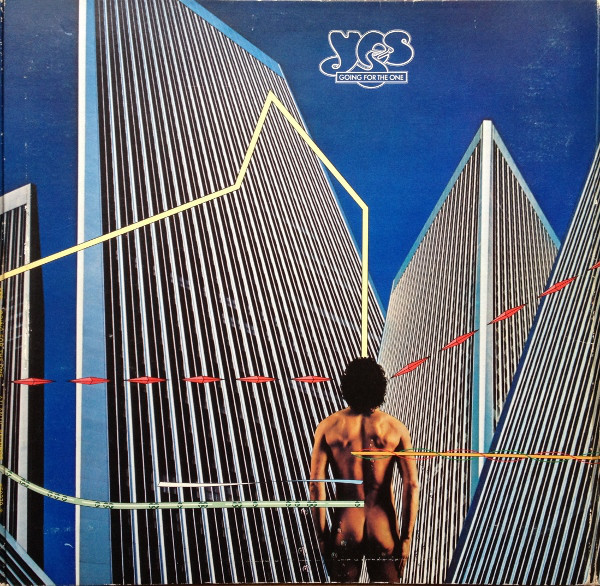
In 1976, Yes retreated to Montreux, Switzerland, to record a new album. Anderson reached out to Wakeman to ask him to contribute, and Moraz was let go from the band. The resultant album, 1977’s Going for the One, was hailed as something of “comeback” for the band. In the legendary year zero of punk rock, a Yes album topped the charts on both sides of the Atlantic. I’m personally a little cool on this album, but it’s still good. Yes tightened up their songwriting and made this album (or at least its first half) more accessible.
Part III: Tormato, Drama, and Hiatus (1978-1981)
Yes continued down the path of shortening their songs and making their material more accessible, but now it felt like they were starting to run dry on ideas. Tormato, released in 1978, was Yes’s weakest album to date. Its weak moments amplified the weaker moments of Going for the One and brought little of that album’s positive attributes.

The band sound exhausted and going through the movements on quite a few songs. None of the songs top eight minutes (which, in light of the weakness of the material, is probably a good thing in this instance). The ballads here are awful, and it confirms that Yes should have focused on instrumental dynamism. “Circus of Heaven” has one of Jon Anderson’s kids on it (children are never, ever good additions to rock music), and “Arriving UFO” gets lost in its own weirdness. (The bevy of bonus tracks on the remastered CD release further underscore this issue. Almost all of them are crap.)
The strongest tracks on Tormato are all high-energy and relatively heavy for Yes’s repertoire. “Future Times/Rejoice” and “Release, Release” sound like rough cuts of songs that could have been on Going for the One. They needed to be workshopped and fine-tuned, but there was something good there. “Don’t Kill the Whale” is also quite enjoyable in its absurdity. The unquestionable high point of the album is Chris Squire’s “On the Silent Wings of Freedom”. Here, Yes’s bassist gets a chance to flex and show off his unique playing style; the effects on his bass are courtesy of a pedal of his own invention. Though thanks to the synth tones and Steve Howe’s particular style of playing, this song is unmistakably a late ‘70s song, it can be held up against any of their much better-known material from earlier that decade.
Following Tormato, the members of Yes were once more unsure of where to go. Jon Anderson favored more lightweight material, whereas Squire, Howe, and White favored heavier, more aggressive music. (At this point, Rick Wakeman was really more of an adjunct member than a full member of the band.) In 1979, both Anderson and Wakeman formally quit the band, leaving the group’s fate in limbo.
So what did Yes do? They recruited The Buggles.
That’s right; the new wave duo (who, come 1982, would be) best-known for MTV’s first video, “Video Killed the Radio Star”, took over for vocal and keyboard duties. Trevor Horn was no Jon Anderson, and Geoff Downes was no Rick Wakeman, but this new incarnation of Yes pushed forward with recording anyway.

1980’s Drama is a criminally underrated album, and I put at #3 in my personal ranking of Yes’s studio output, behind only Close to the Edge and The Yes Album. The desire of Squire, Howe, and White to write and play heavier music is immediately evident. The opening riff of “Machine Messiah” sounds like it could have been written by Black Sabbath.
Along with the relative heaviness, Horn and Downes brought some necessary levity to the band. “Does It Really Happen?” features some new wave-inflected verses and guitar lines, as well as a killer bass solo over some very 1980s synthesizers. “Into the Lens” is another fantastic synthesis of this hybrid group’s influences and styles, with piano-heavy verses and dark yet soaring choruses. Even the relative awkwardness of “Run through the Light” can’t drag this album down, though it is the one point that ever threatens its standing in my ranking.
The closing “Tempus Fugit” is one of Yes’s best non-suites. Played at a blistering pace with harmonized vocals and more new-wave-tinged guitar during the verses, this song highlights all the strengths of this version of the band. There’s plenty of speedy, technical soloing from both Howe and Downes, and Squire’s bass thunders beneath it all.
Alas, this version of Yes was not destined to last. Following the Drama tour, Yes disbanded. Horn went on to a career in music production, and Squire and White both opted to leave the band. Downes and Howe, rather than try to forge ahead as yet another new version of Yes, opted instead to form the band Asia (along with alumni from Emerson, Lake & Palmer and King Crimson).
Squire and White teamed up in 1981 with Jimmy Page to form a band called XYZ (for ex–Yes-and-Zeppelin). Robert Plant was supposed to join as well, but he did not have much enthusiasm for this project (or for progressive rock, more generally speaking). XYZ (as a trio) cut a handful of demo tracks, with Squire singing lead on a couple of them. Two of the demos would later be reworked and released as the Yes songs “Mind Drive” (from 1997’s Keys to Ascension 2 and 2001’s Keystudio) and “Can you Imagine” (from 2001’s Magnification). While never officially released, the 21-minute XYZ demo can be found on YouTube.
Part IV: Yes Does the ’80s (1982-1987)
In 1982, Chris Squire and Alan White were introduced to South African musician Trevor Rabin. The three of them eventually formed a band called Cinema and soon thereafter recruited former Yes keyboardist Tony Kaye to join as well. Initially Rabin and Squire shared lead vocal duties, and Trevor Horn, who was producing Cinema’s recording sessions, was considered as a lead vocalist as well.
Squire ran into Jon Anderson at a party in early 1983 and played him Cinema’s demos, inviting him to join the new group. Anderson agreed, but his creative input was largely limited. Atco Records suggested the group rebrand as a re-formed version of Yes. Rabin was hesitant but ultimately agreed, and 90125 was the result of these recording sessions.

90125 is a pretty good album. It’s just not a great Yes album. When I think of Yes, I think of “Roundabout” and “Close to the Edge”, not “Owner of a Lonely Heart” and “Leave It”. These songs are much shorter and more direct than anything else they’d ever done. There are still some vague hints of Yes’s past life as a prog rock giant, but they’re all quite minimal. The musicianship is top-notch, as would be expected, and the vocal harmonies are on point, particularly on “Leave It”. The brief “Cinema” is another standout, having garnered the band a Grammy for Best Instrumental Rock Performance.
There is a generous amount of ‘80s cheese here. Everything has a super slick sheen to it, and a lot of the synth tones (played mostly by Rabin) feel sterile. Despite all this, I’d recommend this album. The band show a sharp sense for what works in songwriting, and the music never overstays its welcome.
Such generous things can’t be said of Yes’s next studio release, 1987’s Big Generator.
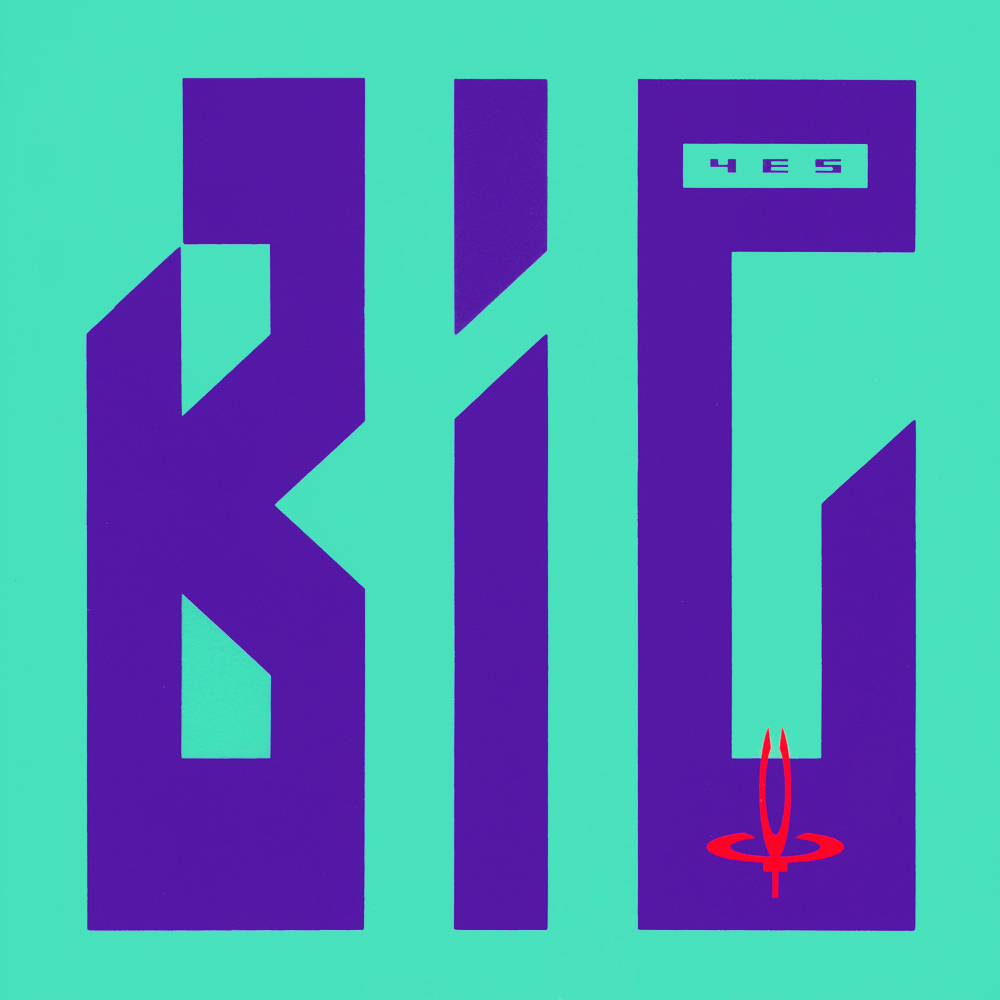
It’s…fine. There’s nothing too egregious here, but it’s mostly inoffensive, big-sounding 80s rock. There’s a more extensive use of group vocals on this album than its predecessor, and the title track has some surprisingly odd moments. “Shoot High, Aim Low” is another relative strong point on the album, with its droning synth and organ and methodical pace. The guitar solo is pure ‘80s cheese, though in the bad way.
Big Generator also has its share of unspectacular moments. “Almost Like Love” is so corny it could have been grown in Iowa. It has that signature awful synth brass sound the ‘80s were renowned for, and Jon Anderson’s rapid-fire vocal delivery feels like an aging band trying desperately to stay hip. “Love Will Find a Way” is another weak point on the album. It feels half-assed, and the group vocals sound weirdly thin and washed out. There’s also a terribly out-of-place harmonica bit. I don’t care how much Yes changes their sound; they’re not the kind of band that can use a harmonica.
The album closes fairly strong. “Final Eyes” harkens back to some of the sounds off Olias of Sunhillow or the softer moments on Going for the One at points. “I’m Running” is the best song on the album. It’s the only one that feels artistic or ambitious in any way.
Big Generator is perfectly adequate. It’s generic, and even its worst moments are more aggressively inoffensive than actually bad. If you like super-generic, glossy, 1980s-style stadium rock, you’d probably like this album. But if you’re reading this, odds are good that’s not your music of choice. (Unless you’re my girlfriend, in which case, thanks for reading, Kelci!) And things are going to get worse for Yes before they get better.
Part V: Oh God, Please, Make It Stop: ABWH and Union (1988-1992)
Ever since Yes re-formed, Trevor Rabin and Chris Squire had been the driving creative forces behind it. Jon Anderson had been sidelined, and his influence was limited to his vocal performance and occasional lyrical contributions. In 1988, he left Yes to begin recording a solo project. He enlisted three other ex-members of Yes in this effort: Steve Howe, Rick Wakeman, and Bill Bruford. Bruford’s King Crimson bandmate Tony Levin was brought in to play bass for this project. This project was named after the four of them (Anderson Bruford Wakeman Howe (ABWH)), and Yes sued to prevent ABWH from mentioning Yes in any promotional material.
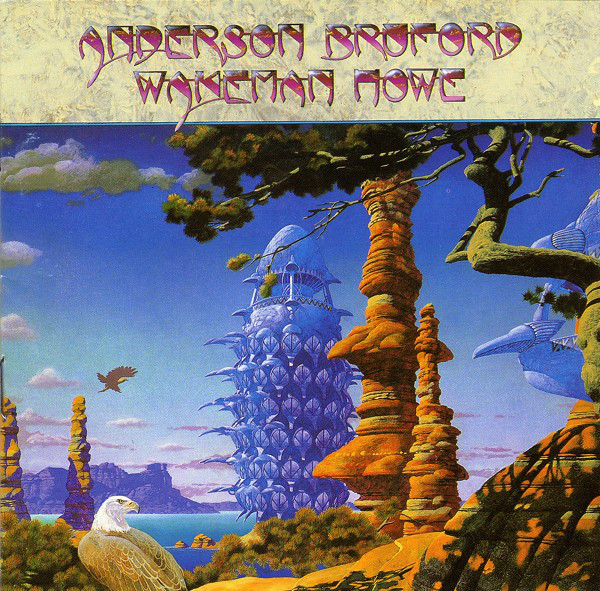
ABWH’s sole album, a self-titled effort, was released in 1989. It’s obvious that Anderson et al hoped for this to be the spiritual successor of Yes’s classic period. For the first time since 1980’s Drama, Roger Dean artwork graced the album cover, and Arista Records made this album’s catalog number 90126.
The music on ABWH is far, far more artistically ambitious than the Trevor Rabin-Yes material. At the same time, it was 1989, and the stretch of the mid-1980s to the mid-1990s was truly a dark time for progressive rock. The album starts off strong, except for Wakeman’s fucking grating synth tones. The songs are engaging, dynamic, and a big improvement over Big Generator. But then the album hits its first hiccup with the 10-minute suite “Brother of Mine”. It’s fluffy and cheesy, sappy and saccharine. Howe’s playing is so overwrought it’s comical, and when the song tries to kick into higher gear, Wakeman’s synth brass tones ruin it. The poppy, energetic section with handclaps gives some awful “Kumbaya” vibes.
“Birthright” could have been a good addition to a late-80s action movie soundtrack, with its slow build and John Carpenter-esque cavalcade of high-energy synths in the climax, but it’s middling at best when taken in the context of its full six-minute runtime. “The Meeting” continues this trend of overlong songs, meandering for four aimless minutes of piano tinkling. And when the sappy acoustic intro of “Quartet” comes in, with Anderson’s pop-ballad-style lyrics, it’s tough to slog through this. For nine minutes, this song drifts in unimpressive, acoustic territory.
But with the opening of “Teakbois”, you will pray to have that back. Did you want to hear shitty ‘80s Yes play calypso music? Fuck no, you didn’t. You’re a reasonable individual. No one should want this. It’s awful. Please, make it stop.
After the longest seven-and-a-half minutes of your life, Steve Howe finally gets to play a guitar line that sounds like Steve Howe to open the penultimate track. Wakeman’s synths continue to spray diarrhea over everything, and Anderson’s attempt to do a more intense vocal style feels forced and unintentionally funny. Despite this, this is probably the strongest track on the album and a much-needed respite from the preceding bombardment of garbage.
ABWH struggled to write more material after their debut, so Jon Anderson reached out to Trevor Rabin. Rabin, on his end with Yes, had been struggling to find a replacement lead vocalist while still writing new material. Following a brief dispute over which songs should be for Yes and which should be for ABWH, both acts decided to record their own material but then release it jointly under the Yes moniker.

And so 1991’s Union was born. This is effectively two bands performing on the same album. Jon Anderson rejoined Trevor Rabin’s Yes while still fronting the ABWH material. (Squire also provided backing vocals on a few of the ABWH songs.) No song on this album has all eight members playing at once, though all eight would play a few songs together on the ensuing tour.
If that background sounds like a recipe for disaster to you, you’d be correct. Union is an ungodly, unfocused, overblown, poorly-written, and poorly-produced morass. In my personal ranking, I’d put this as their third-worst.
From its opening notes, Union signals a continuation of the sound palette of ABWH mixed with Trevor Rabin’s hyper-80s songwriting style. Imagine the worst parts of Big Generator with ABWH’s lack of focus, and it’s clear why Rick Wakeman derisively calls this album Onion. The choruses are huge and cheesy. Listening to this album for this retrospective (for the first time in years) was a genuine challenge. Most of the songs here are in the five-to-seven-minute range, and they all feel so, so much longer.
In doing research for this piece, I found that most of Howe’s and Wakeman’s parts were overdubbed with session musicians, and that goes a long way in explaining the aggressively generic nature of this album. It’s almost a parody of ‘80s hard rock at many points.
Yes did earn another Grammy nomination for Best Rock Instrumental from this album with the song “Masquerade”. But that’s because it’s a Steve Howe solo acoustic piece. Rabin didn’t write it, and Anderson couldn’t cheese it up. It’s a nice enough little song, but it’s not up to par with Howe’s classic acoustic pieces of “Mood for a Day” and “Clap”.
“Saving My Heart” is a relative high point on Union, insofar as it has an identifiable melody, and the chorus is pretty strong. It’s a stupid piece of pure pop, but I’ll take what crumbs of enjoyment I can get out of this album.
Union is a 70-minute monstrosity that serves as a testament to how poorly Rabin’s songwriting style has aged, how important it is to select enjoyable synth tones, and the importance of band chemistry. Union’s mega-Yes were fractious at best, and so much of this album feels paint-by-numbers. Following the Union tour, the BWH of ABWH left the group, returning Yes to its 90125/Big Generator lineup.
Part VI: The Pretty Good ’90s (1993-1997)
Well, BWH didn’t leave so much as the record label wanted Trevor Rabin to once more take the lead and pump out another pop-rock album. In a change from his previous modus operandi, Rabin wanted to have a better relationship with Jon Anderson and involved him in the songwriting process from the get-go. At the same time, Chris Squire took a step back.

Talk was released in 1994 to mixed-to-negative reviews, but I have a weird soft spot for it. I openly acknowledge it’s far from Yes’s best work, but it’s the first album where they sound like Yes since Drama. Well, some of the time, at least. Rabin still had a heavy hand in the songwriting, and it’s a pretty pop-inflected album. The production is as slick as ever, and there are some nonessential tracks here.
The opening “The Calling” is cheesy as all get-out with a huge, radio-friendly chorus. But unlike anything on Union (or most of what was on Big Generator), it’s actually catchy, and the band seem to have put some effort into it. But I can’t be quite so kind to the next song, “I Am Waiting”. This is another piece of evidence that Yes should not do ballads. Sappiness is not something they’ve ever been able to pull off.
The nearly-nine-minute “Real Love” feels like Yes’s first true progressive rock song since The Buggles were in the band. It’s slow-building, and Rabin’s soloing feels quite David Gilmour-inspired. (It’s not a very Yes-like solo, but it fits; this is a pretty Pink Floyd-y song.) Like elsewhere on this album, the chorus is built up to be huge and catchy, but the organ, crunching bass, and twisting guitar lines help it feel grand.
“State of Play” is another awkward big-riff song, and it suffers from a lot of the same ills as Big Generator. The aforementioned big riff is pretty good, but the verses are clumsy and tuneless. “Walls” (co-written by Roger Hodgson of Supertramp) is similar in its grandiose riffage, but it’s a stronger song with some almost-country flavor.
Talk closes on “Endless Dream”, Yes’s first suite since “Machine Messiah”, and it’s a welcome return to form. It opens with rapidfire piano, huge, heavy guitar and bass, and pounding drums. This opening salvo, while not quite on par with the opening minutes of “Heart of the Sunrise”, is in the same family. Part two is mostly slow and gentle, led by Tony Kaye’s keys. It avoids pop sweetness and feels genuine. I’d compare it to “Wondrous Stories” or the “Soon” section of “Gates of Delirium”. Layers of weird, froggy guitar lines build up under Yes’s trademark group vocals while Alan White’s drumming keeps the song churning and lurching forward in uneven starts and stops. “Endless Dream” ends on a softer note, floating on a sound which, while surely intended to feel majestic, comes off as dated.
Following the Talk tour, both Rabin and Kaye left Yes to pursue other projects. Sans guitar and keyboards, the three remaining members invited Steve Howe and Rick Wakeman to rejoin Yes and resurrect one of the band’s classic lineups. This lineup recorded two lengthy new studio tracks, “Be the One” and “That, That Is”. Rather than release these tracks as a part of a studio album they were packaged with the live album Keys to Ascension.

Keys to Ascension is a great album. The live material consists solely of their ‘70s output, and the studio stuff is great too. “Be the One” takes a bit too long to get going, but it’s worth the wait. Wakeman finally figured out that farty synth brass is not an enjoyable noise, and Howe’s style fits so much better than Rabin’s.
The sprawling “That, That Is” opens with an extended acoustic guitar solo from Howe. That shifts to Anderson’s babbling vocals, in a manner reminiscent of “We Have Heaven”, but that’s a brief stopover. The opening verse is tense and high-energy. Squire’s bass squirms anxiously as the song plows forward. The suite has a million ideas in it, shifting deftly from one dynamic extreme to another.

After the release of Keys, Yes continued recording new studio material for a new album. Their record label had different ideas and slapped five new studio tracks onto another live album, titled Keys to Ascension 2. Irritated at this move, Wakeman quit the band. For the fourth time.

The five studio tracks on Keys 2 absolutely could have been (and should have been) released as an independent album. Unlike the earlier monstrosities of ABWH and Union, Yes’s classic lineup managed to find a way to write music in their classic style without it feeling dated. The suites sprawl and build without meandering, and Anderson’s and Squire’s vocal harmonies sound much earthier, a huge improvement over the hyper-polished near-chorus that was present on Rabin-era Yes albums. The new studio material on these two albums are on par with much of the band’s classic ‘70s output.
(All seven studio tracks released on the two Keys to Ascension albums would be released as a semi-compilation in 2001, Keystudio.)
Part VII: Turn of the Century (1997-2007)
Wakeman’s departure threw the band into disarray. Tour plans were scuttled, and the remaining members went their own ways. Chris Squire began the songwriting process for a side project with longtime Yes producer and occasional studio contributor Billy Sherwood. This Squire/Sherwood material would eventually become the beginnings of the next Yes album, and Sherwood was brought on as a fulltime member of the band, handling additional guitars and some keyboards.
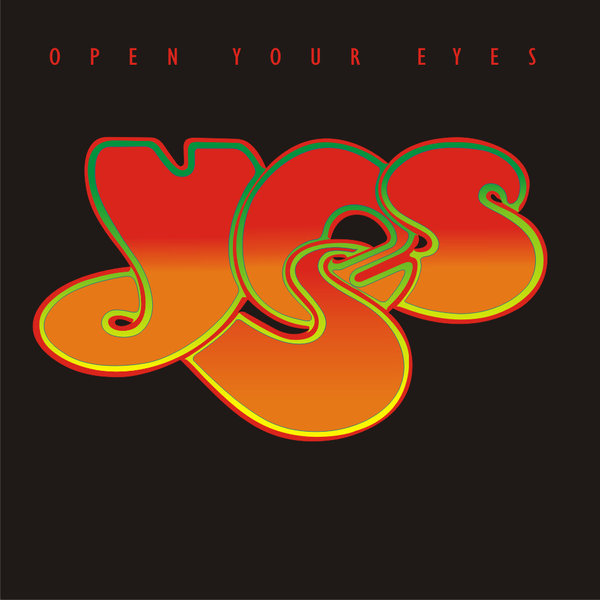
The result was 1997’s Open Your Eyes, and this was truly Yes’s nadir. Jon Anderson and Steve Howe claimed they were sidelined in the songwriting process, and it shows. The music here is mostly bland adult alternative-style rock. It’s achingly generic and comes off as undercooked.
A few good ideas can be heard here. The opener, “New State of Mind” has some strong vocal harmonies, despite a notably un-Yes-like riff and awful synth tones. “Fortune Seller” sounds like a crappy, underdeveloped Yes song, as opposed to some other generic, crappy, underdeveloped song. Some workshopping could have saved this. And “The Solution” (or at least its first five minutes, at least; more on that shortly) is a passable hard rock song.
Most of this album though? Ugh. It just depresses me. The songwriting is so weak, so bland, so offensively inoffensive. I struggle to write about it, it’s so interminably dull. What is there even to say about such snoozefests as “Wonderlove” or “No Way We Can Lose”? This album plods along, with every song nearly the same tempo, and the few speed variations all seem to be ballads. “The Solution” has a hidden track of 15 minutes of ambient nature sounds, chimes, and the occasional vocal snippet, which does absolutely nothing.
Open Your Eyes tries to be a Yes album at points, but it falls flat on nearly every attempt. The organ solo in “Fortune Seller” is one of few successes, and there is the occasional strong vocal performance. But when the high points are almost all vocal, that does not bode well for a band which has been historically known for instrumental virtuosity. It boggles my mind that this is the same guitarist and bassist who recorded “Heart of the Sunrise” and “Gates of Delirium”.
The man who played that organ solo in “Fortune Seller”, classically-trained Russian musician Igor Khoroshev, would join Yes as a full member prior to their tour supporting Open Your Eyes.

When Yes returned to the studio to record their next album, the songwriting process was much more collaborative, to great success. Their 1999 album, The Ladder, is Yes’s best synthesis of their pop and prog leanings. It’s a distinct-sounding album, full of influences and textures atypical of Yes’s sound, including brief flashes of Latin and dance music. To further illustrate, Yes even use samples on this album.
The title track opens the album, and it’s a strong three-part suite. The playing is dynamic, and once more on par with their classic efforts. Chris Squire’s bass both cuts through to the front and supports Howe’s lead guitar. Khoroshev’s synthesizer choices are the best the band has had in nearly twenty years. (I really don’t know what Wakeman was thinking in the ‘80s and ‘90s, and Rabin-era material minimized keys most of the time.)
“Lightning Strikes” is possibly the oddest song Yes have ever recorded. It opens with a sample of The Kinks’ “Phenomenal Cat” before segueing into Latin guitar and then diving headfirst into dance-music-influenced synthesizers and electronic percussion. This is a real head-scratcher, but in a good way. The competing Latin and dance influences mesh shockingly well in the framework of Yes’s progressive rock stylings.
In addition being Yes’s weirdest album, The Ladder is also their happiest and sunniest. Most of the songs have a glowing quality about them, and Khoroshev’s synthesizers are a major reason for this. “Face to Face” is another example of Yes embracing dance-y keys and fast tempos in a major key. Despite all this, they somehow managed to avoid coming off as cheesy or otherwise off-putting. Not all such experiments were completely successful, though. “Finally” feels somewhat clumsy and overblown.
“New Language” is the album’s penultimate song and the best integration of this album’s competing pop and prog influences. It vacillates between bouncy, happy, accessible moments and complex experiments, replete with extended solos. “New Language” is this album encapsulated in one song.
Unfortunately, this lineup of Yes would not last. Frustrated that Yes’s live shows were now almost entirely their back catalog, Billy Sherwood quit Yes to pursue his own projects. Igor Khoroshev was fired from the band after being charged with sexual assault while on tour.
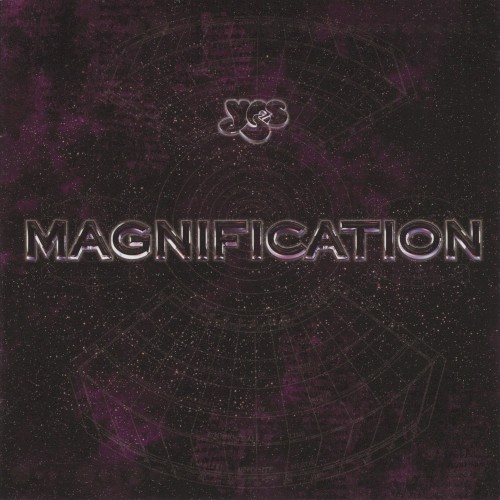
Yes decided to push forward with just the four remaining members for their next album, 2001’s Magnification. Rather than hire a new full-time keyboardist, Yes opted to record with a 60-piece orchestra, their first time doing so since their 1970 sophomore album, Time and a Word.
I may gush about The Ladder’s weird, poppy goodness and Talk’s aggressive prog experimentation, but 2001’s Magnification is truly Yes’s strongest recent output. I’d call it better than Going for the One and roughly on par with the Keys to Ascension 1 & 2 studio output. It’s sad to say that this was the band’s last great album.
Magnification opens with the title track. It’s a rather light, floating song but not without impact. The rich strings are deftly accented by Chris Squire’s bass playing, and the chorus is huge and grandiloquent. Not only is the sound quality rich, but it’s a solid, catchy melody—one of the best since the band’s classic era output.
“Don’t Go” sounds like it could have fit in well on The Ladder. It’s a bouncy, quirky, happy song, and the strings fill the space left by keyboards seamlessly. While this is the most Ladder-like song, quite a few songs feature choruses or passing musical ideas which share a lot DNA with that album.
Yes’s decision to go full-bore with the strings was a brilliant move. If they’d been less bold, perhaps minimizing them, it could have come off much worse. “Give Love Each Day” opens with two minutes of orchestral music, sans rock instrumentation, before turning into a slinking, slowly-escalating piece.
“Can You Imagine?” is a reworking of a song originally recorded with XYZ and is a rare example of Squire getting lead vocals on a Yes song.
The two strongest songs on this album are also the two longest. Appearing back-to-back, the first is “Dreamtime”. “Dreamtime” opens with Howe’s speedy classical guitar lines topped with sweet strings and liquidous electric guitar. The verses are dark and oppressive. Chris Squire’s bass has a biting twang, and brass is used much like an overdriven organ. Between all this are moments with subtle Middle Eastern influence. The song closes with two minutes of moody, spooky orchestral music, giving equal highlight to the strings and reeds.
“In the Presence Of” is a classic Yes-style multi-parted suite, albeit terser than most. In contrast to the preceding song, this one keeps its tone sunny and uplifting, a task uniquely well-suited to an orchestra.
Magnification was Yes’s last great album. After a long stint of touring, the band decided to take a hiatus in 2004.
Part VIII: The Post-Jon Anderson Output (2008-Present)
In 2008, while preparing for a tour with Yes, vocalist Jon Anderson suffered a severe asthma attack, and his doctor instructed him to postpone any performing for at least six months. Not wanting to delay the tour, the other members of the band (Squire, Howe, White, and keyboardist Oliver Wakeman (the son of Rick)) recruited Canadian singer Benoît David to replace Anderson.
After that tour, this new iteration of Yes returned to the studio to begin work on a new album. Based primarily around a suite written during the Drama recording sessions, Geoff Downes was brought in to replace the younger Wakeman on keys, and Trevor Horn produced.

This new album, 2011’s Fly from Here, is fine. There are some good ideas here, particularly in the sprawling title track. David sounds closer to Trevor Horn than Jon Anderson, the main theme sounds more like a Buggles song than a Yes song, and the keys feel awfully glittery for my taste. Despite all this, the musicianship is top-notch, and it’s a strong suite.
Beyond the title track, though? Mostly forgettable. “The Man You Always Wanted Me to Be” is anodyne and spineless. “Hour of Need” sounds like it could have been on Big Generator or Union in its glossy blandness. “Into the Storm” is something of a split decision for me. I dislike the vocals a lot—they sound like they’re trying to be emotional and emphatic but come off flat, and the melody sounds forced. Instrumentally, though, it’s top-notch.
“Life on a Film Set” is slow to get going, but it’s one of the better (non-suite) songs on this album. It feels like a Yes track that could have been on Going for the One.
In 2012, Benoît David was replaced by Glass Hammer vocalist Jon Davison. I do not like Glass Hammer. I think Lex Rex is a good album, but beyond that, I think they emblematize everything wrong with modern progressive rock. I’ll save a deeper exploration of that for another essay, but this bit of information will become pertinent shortly.
When Benoît David joined Yes, Yes effectively had their next album already written. David provided vocals, but he did not participate in the songwriting process to any appreciable degree. Davison, on the other hand, was quite hands-on. He contributed a significant amount, and he gave everything on the next album the awful aura of Glass Hammer’s generic, unambitious drivel.
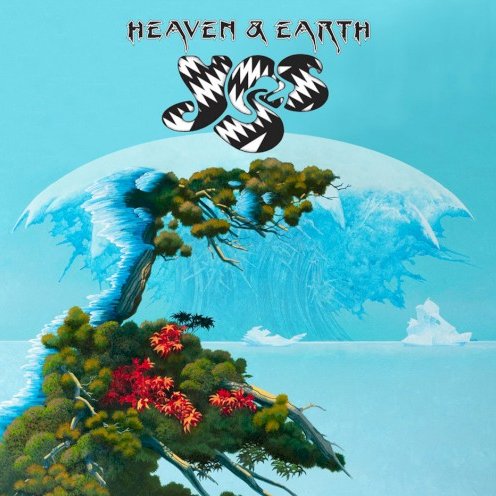
2014’s Heaven & Earth is so flat. It’s so soulless. It’s bland, pedestrian, sleep-inducing, insipid, and every other synonym for “boring” there is. It’s like if Air Supply or some other soft rock act decided to try to make a Yes album. Steve Howe’s guitar never really takes the lead, and it usually ends up buried under a sheet of pillowy organ and gently-strummed acoustic guitar. I also get some awful echoes of worship music. I could absolutely imagine seeing songs like this being played at some church youth group.
“In a World of Our Own” is one of the rare high points on the album. It’s got a strange, lurching rhythm, and the organ has some occasional crunch to it. The conclusion of “Light of the Ages” is another relative strong point.
I thought it was going to be close between Union and this for second-worst Yes album, but this makes me long for the relative dynamism of Union. Everything on Heaven & Earth is soft and flat. There’s almost no sonic variation. At least the aesthetic trappings of Yes’s sound save this from being relegated to the same cellar as Open Your Eyes.
Chris Squire passed away in 2015 and was replaced on bass by Billy Sherwood. The band continue to tour, and in 2018 they re-released Fly from Here, slightly remixed and with Trevor Horn on vocals, as Fly from Here – Return Trip. I see no significant difference between this and the original.
In 2021, Yes put out The Quest. It’s a modest improvement over Heaven and Earth, but it’s still soulless AOR and soft rock. You can read my thoughts on it here.
In 2023, they released Mirror to the Sky. It’s a huge improvement over The Quest, though it’s far from perfect. Read my thoughts on it here.
Part IX: TL;DR and Ranking
Yes are one of the grandmasters of progressive rock for good reason. In the span of 1971-1977 the band produced a string of (mostly) spectacular albums. Prior to that, they were an enjoyable, dynamic heavy psych group. Their output post-1977 was plentiful and varied. Ranging from stellar albums like Drama and Magnification to absolute trash like Heaven & Earth and Open Your Eyes, to say nothing of their stint as 1980s pop-rockers.
There’s a lot to hear and a lot to enjoy. I really recommend looking into Yes’s extended studio discography.
Below is my ranking of Yes’s 21 studio releases. Some of the scores were tough to nail down. Close to the Edge is just barely my favorite over The Yes Album, but I can find no real flaw in either. Similarly, I like Relayer and Fragile a lot. Deciding which to rank higher and how to score these was really tough.
- Close to the Edge (1972) (100/100)
- The Yes Album (1971) (100/100)
- Drama (1980) (95/100)
- Tales from Topographic Oceans (1973) (93/100)
- Relayer (1974) (93/100)
- Fragile (1971) (91/100)
- Keys to Ascension 1 & 2 studio material/Keystudio (1997/2001) (88/100)
- Magnification (2001) (87/100)
- The Ladder (1999) (83/100)
- Going for the One (1977) (82/100)
- Time and a Word (1970) (80/100)
- Yes (1969) (77/100)
- Talk (1994) (74/100)
- Mirror to the Sky (2023) (73/100)
- 90125 (1983) (72/100)
- Fly from Here (2011) (68/100)
- Tormato (1978) (61/100)
- Anderson Bruford Wakeman Howe (1989) (53/100)
- Big Generator (1987) (50/100)
- The Quest (2021) (35/100)
- Union (1991) (32/100)
- Heaven and Earth (2014) (24/100)
- Open Your Eyes (1997) (19/100)
Follow me on Facebook to stay abreast of my latest posts.
3 thoughts on “Deep Dive: Yes”